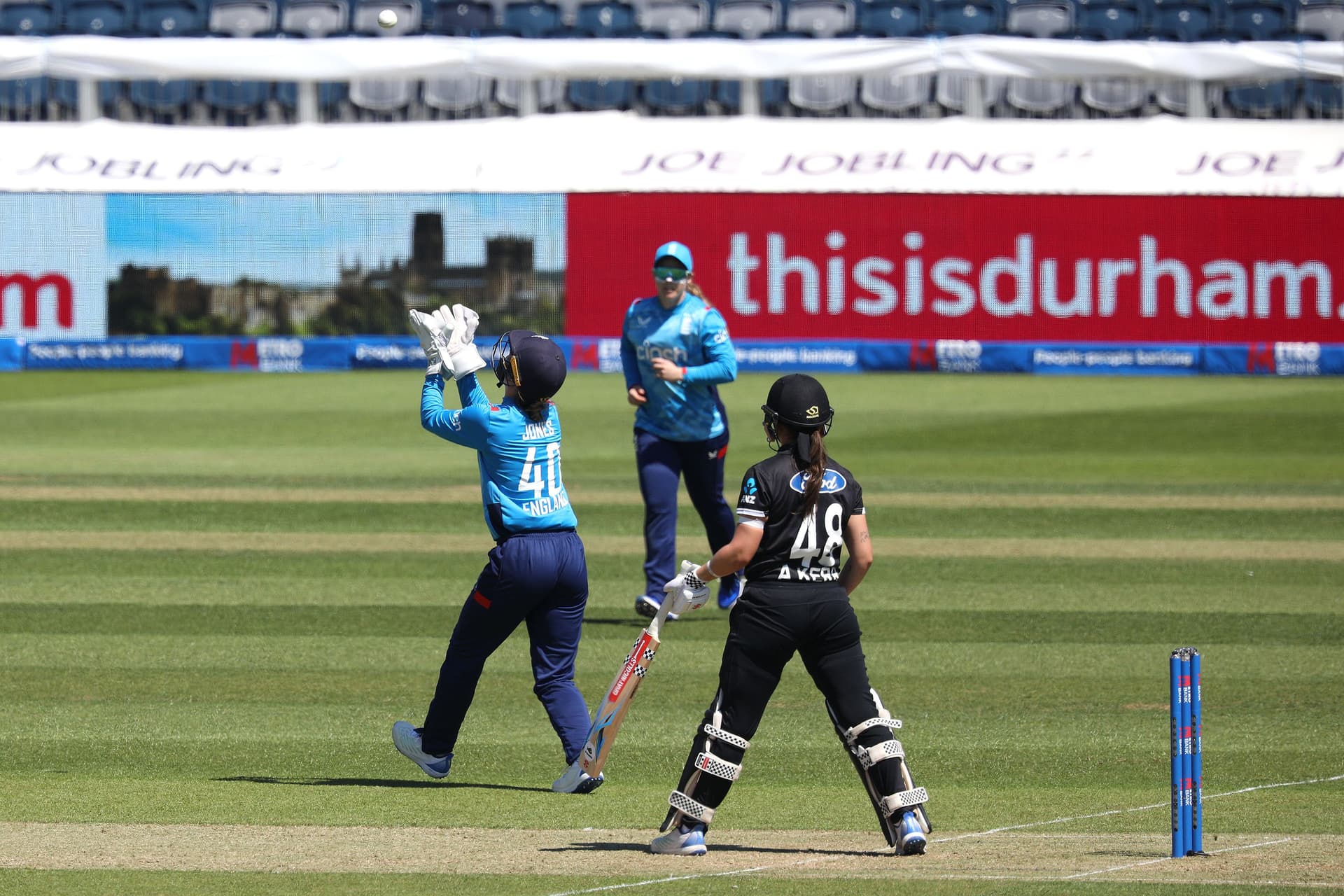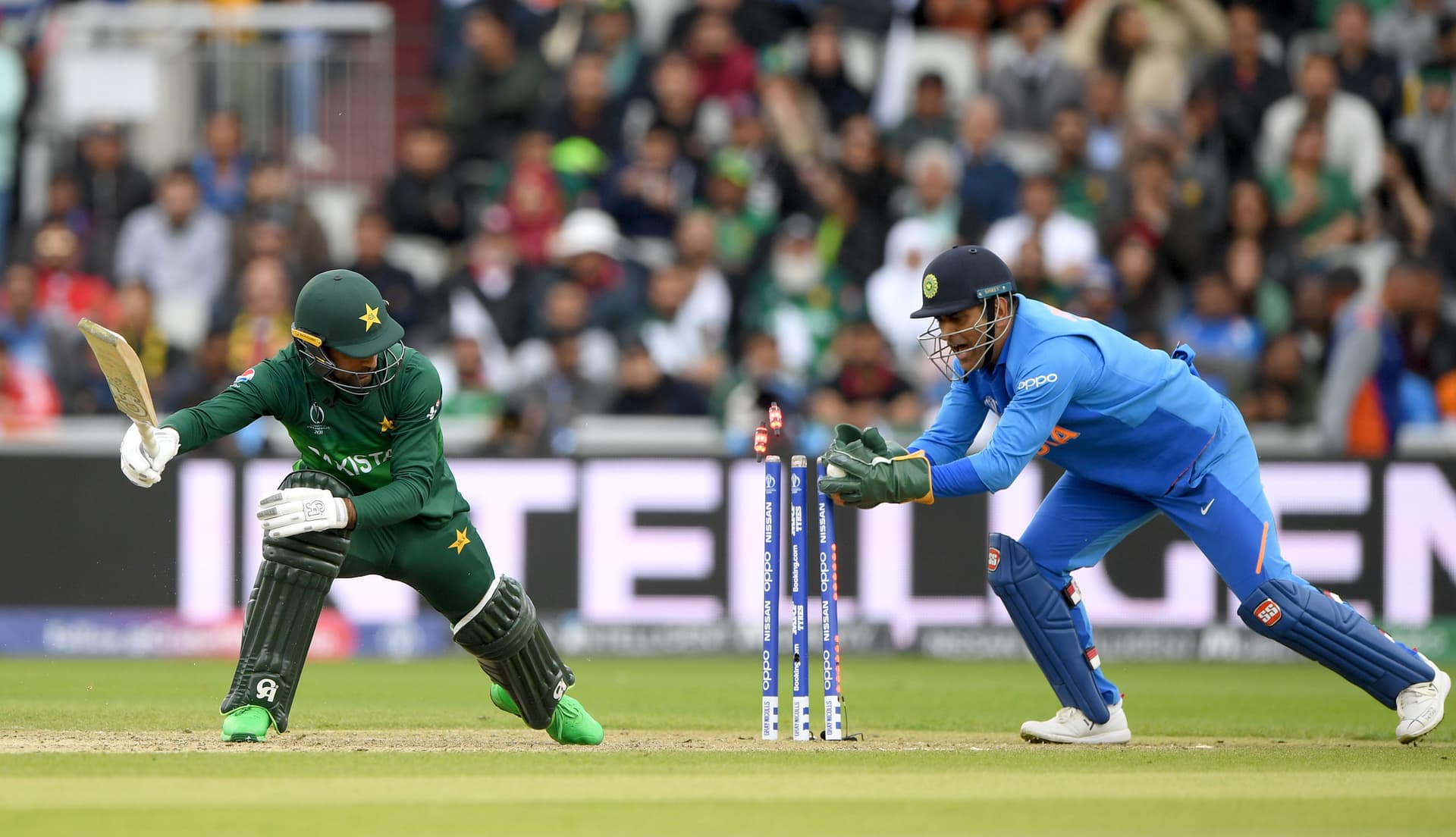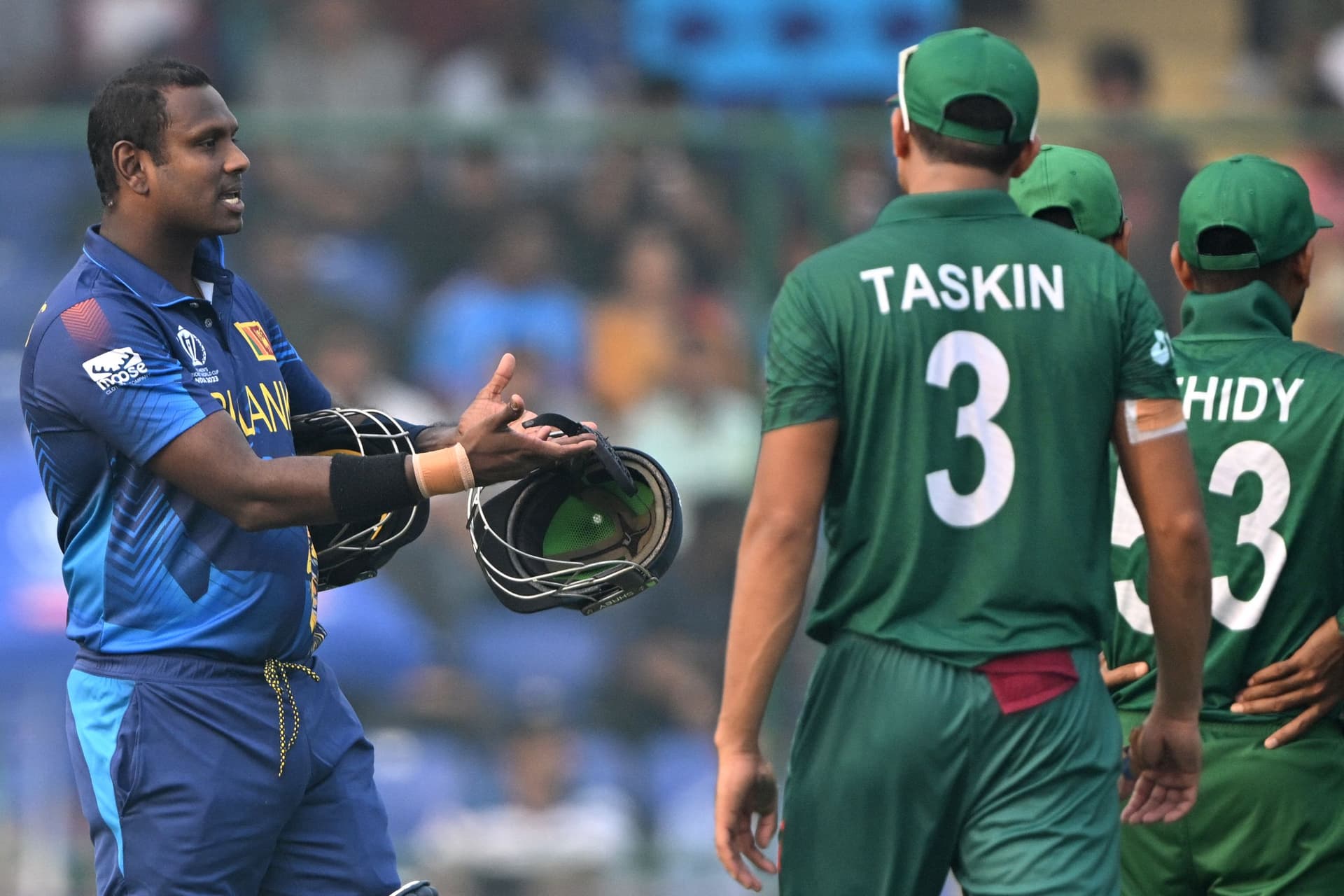Cricket
How Many Types of Out in Cricket? Every Dismissal Explained
There are 10 types of out in cricket - bowled, caught-out, LBW and more, Know all about them and interesting instances from cricket history.

Image Credits: Gareth Copely Getty Images
Broadly speaking, there are 10 types of out in cricket with five of them being the most common type of dismissals and the other five not so common. An “out” in cricket refers to a moment when a batter’s time at the crease comes to an end either for that particular match (in limited overs cricket) or for that particular inning (in Test match cricket).
When a batter gets out, it is a signal for the next batter in line to come to the crease and keep the scoreboard ticking. In cricket, if 10 players of the batting team are dismissed, it is referred to as all-out. Once the batters of the team batting first are all dismissed, the other team comes to bat to chase down the runs tallied by the first team within the given quota of overs.
Hence, getting a player out is a bowler’s primary objective and the ultimate achievement. Interestingly, bowlers have multiple ways to get a batter out and we will discuss all of them below.
Types of out in cricket: 10 Types
Types of out in cricket: 10 Types
| Sr no | Type of Out | Description |
| 1 | Bowled | When the ball goes on to hit the wickets behind the batsman. |
| 2 | Caught | When a batter hits the ball directly to an opponent player’s hands without it getting a single drop. |
| 3 | Stumped | When the ball is used by the wicketkeeper to dismantle the stumps before a batter gets back to the popping crease. This happens when a batter has no part of his or her body or bat behind the crease. |
| 4 | Leg Before Wicket | When a bowler manages to hit any part of the batter, except the bat, which is in line with the stumps. The umpire takes the final call in this dismissal. |
| 5 | Obstructing the field | A batter can be given out if he or she is found to obstruct or distract a fielder from the opponent’s team, either by action or words. |
| 6 | Run-out | When a batter fails to make it to the popping crease, the stumps behind the crease are dismantled by a player of the opposition. |
| 7 | Timed Out | When the new/upcoming batter takes more than the allotted three minutes to come to the crease to face the ball, after a dismissal. |
| 8 | Hit Wicket | When the batter hits his or her stumps mistakenly with the bat or any other body part while playing a ball. |
| 9 | Retired out | This refers to an out when a batter leaves the field without getting dismissed and of his or her own volition and not by the umpire’s decision. |
| 10 | Hit the ball twice | When the batter hits the ball twice in one delivery. While the first hit is legal, the second time is illegal and results in dismissal. |
1. Bowled Out
The most popular form of dismissal in cricket and inarguably the most beautiful one as well. A batter is bowled out when the ball escapes the bat or body and goes on to directly hit the wickets. The purest form of dismissal in cricket, this out indicates that a batter is beaten by the bowler in all regards. If the ball goes on to hit the wickets by deflecting off the body of a batter, it is still regarded as a bowled out.
2. Caught Out
While bowled out is a fan-favorite form of dismissal, getting caught out may be the most common dismissal in cricket. It could also be referred to as the most easily understood dismissal by fans given its simplicity. A catch-out happens when the ball is plucked by a fielder after it hits the bat and before it touches the ground.

Image Credits: MI News/NurPhoto via Getty Images
Apart from the normal caught-out, it has two other forms - caught behind and caught and bowled. A “caught behind” happens when the ball gets carried directly to the wicketkeeper behind the batter after hitting the bat. A “caught and bowled”, on the other hand, takes place when the ball is caught by the incoming bowler while completing his or her run-up.
3. Leg Before Wicket (LBW)
Leg before wicket (LBW) is easily the most confusing, and often the most subjective, form of dismissal. Simply put, a batsman is given leg before wicket when a ball hits any part of a batter without first hitting his or her bat or gloves all the while staying in line with the three stumps.
While this out is given based on the assumption that the ball would have gone on to hit the stumps had it not hit a batter’s body, it falls on the umpire to take the call. The laws surrounding the LBW out have evolved over the years with terms like “pitching out leg” and “umpire’s call” coming into play.
4. Run-out
As the name says, a run-out refers to the dismissal when a batter cannot reach the crease while attempting to run between the wickets and the wickets are dislodged by the opponent team. This kind of out usually takes place while converting quick singles into two runs. The cricket rules state that a batter should have his or her bat beyond the popping crease to finish a run.
If the wickets are dislodged by the opponent team with the batter’s bat on the line of the popping crease, he or she is declared run-out. The fast nature of this display has often seen the on-field umpires refer to the third umpire, who has the liberty of using multiple camera angles and slow-motion videos to conclude the dismissal.

Image Credits: Stu Forster-ICC/Stu Forster-ICC
This type of out is common mostly in spin bowling as the wicket-keeper stays closer to the wickets behind the stumps to collect the ball. Spin bowling is also used to tempt the batter to step out and hit the ball before it bounces and turns in a different direction.
6. Retired Out
Not to be confused with retired hurt, a retired out refers to a situation when a batter decides to walk out of the ground without the umpire’s consent or gets seriously injured or due to some illness.
It is a very rare form of dismissal and is hardly seen in any form of cricket, whether international or domestic. It is interesting to note that while a batter is allowed to return to resume his or her inning after getting retired hurt, the same is not applicable if one is retired. In IPL 2022, Indian all-rounder Ravichandran Ashwin became the first batsman to be retired-out.
7. Hit the Ball Twice
The rarest form of out in cricket is this one. Players train their whole life to hit a ball in one go and getting out by hitting the ball twice in a single delivery is seldom seen. However, there is a rule that a batter is given out when he or she intentionally hits a ball the second time using the bat or with any other body part. It is important to note that no batter is found hitting the ball twice in Test cricket.
8. Hit-wicket
Once a rare form of out, hit-wicket has become more recurrent in modern cricket. This kind of dismissal takes place when a batter ends up dislodging his stumps while playing a delivery. A hit-wicket doesn’t necessarily happen with the bat only, but it is a legit dismissal even when a batter mistakenly hits the stumps behind with his foot or any other body part.
The most unusual hit-wicket dismissal took place during an England vs West Indies Test match in 2007 when Dwayne Bravo’s bouncer hit Kevin Pietersen’s helmet and it fell on the stumps, resulting in a dismissal.
9. Obstructing the Field
This dismissal is more common than it sounds. This happens when a batter is found intentionally obstructing the fielding team after he or she has already played the delivery. In Test cricket, England’s Len Hutton was given out for knocking the ball away from the stumps that prevented South Africa’s Russell Endean from taking a catch. In ODIs, however, it has happened eight times.
10. Timed Out
Yet another rare form of dismissal is timed-out, which refers to a scenario when an incoming batter after a dismissal takes longer to come to the crease than the allotted time. This rule is also applicable to an unbeaten batter in Test cricket if he or she doesn’t get to the crease after an innings break is over.

Image Credits: ARUN SANKAR/AFP via Getty Images
The first and the only batter to ever get timed out is Sri Lanka’s Angelo Mathews after he took longer than two minutes to come to the crease following the dismissal of Sadeera Samarawickrama during the Sri Lanka vs Bangladesh match during the 2023 ODI World Cup.
FAQS

An M.A. in English Literature, Subhayan is an experienced journalist and sports writer. Having worked as a journalist at Hindustan Times, Subhayan covered diverse beats including sports, education, and health, showcasing his versatility and in-depth understanding of various subjects.